Applications of LED:
- LED TV
- House lighting
- Digital phones
- Camera flashes
- Street lights
Advantages of LED
- It is more energy efficient than conventional bulbs
- It has a greater life span compared to conventional bulbs
- It can be operated in the fast-switching application
- It is small in size
- It has better controllability on its brightness
LED
LED is a P-N junction diode, whenever the current flows through it in the forward direction, it emits light of a particular color. This process of giving off light when applying electrical energy is known as electroluminance.
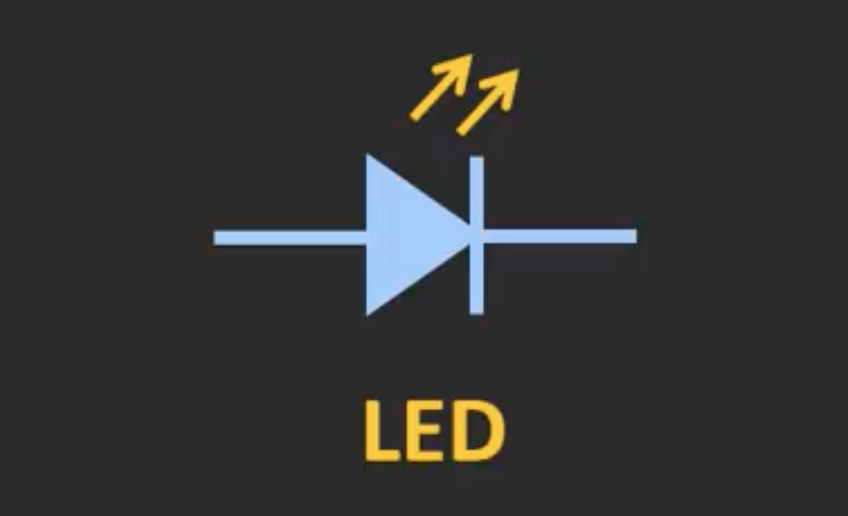
When the diode is forward-biased, the holes in the P side will move towards the N side while the electrons in the N side will move towards the P side. Both the movement of holes and electrons contribute towards the current. So, electrons and holes will recombine with each other. Whenever this happens, normally they will release energy in the form of heat, but in the case of a light-emitting diode, the energy will be released in the form of light.
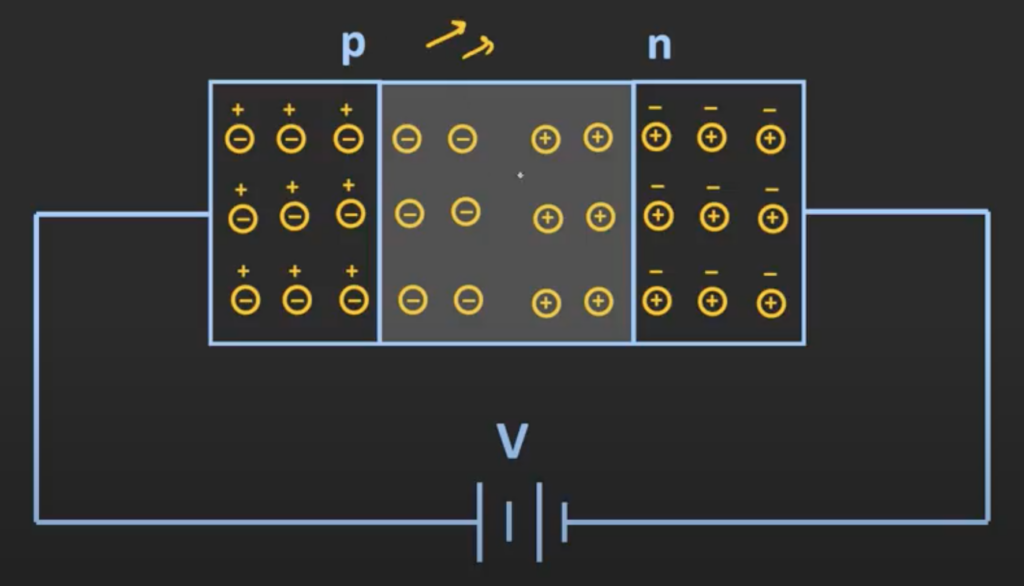
Energy Band Diagram
In the crystal structure, the free electrons are in the conduction band, and the holes are still in the valance band. So whenever the electron and hole recombine, the electron from the conduction band comes into the valance band. Since the electron moved from a higher energy level to a lower energy level, then it will release the energy in some form. In the case of an LED, these energies will be released in the form of light or photons rather than head.
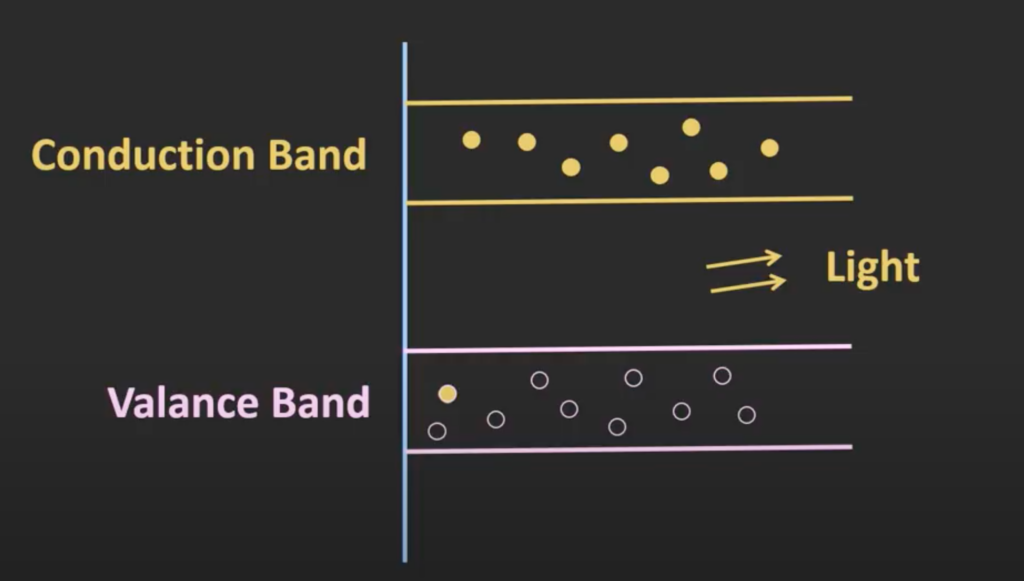
When the photon is emitted, the energy of it is equal to the band gap which is the energy difference between the conduction band and valance band. It is usually represented in electron volts (eV). Suppose the energy of the gap is Eg, the energy of the photon can be given as hc/λ. As we can see from the equation, the band gap is inversely proportional to the wavelength, so by altering the band gap, we can change the color of the emitted light.
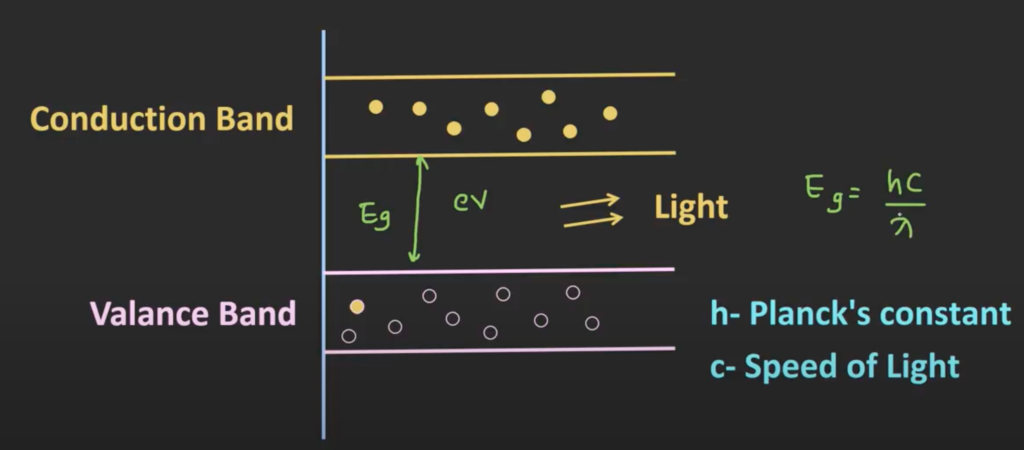
LED Materials
| Colors | Material |
| Infrared | Gallium Arsenide (GaAs) Aluminium Gallium Arsenide (AlGaAs) |
| Red | Aluminium Gallium Arsenide (AlGaAs) Gallium Arsenide Phosphide (GaAsP) Gallium Phosphide (GaP) |
| Orange | Gallium Arsenide Phosphide (AlGaAs) Aluminium Gallium Indium Phosphide (AlGalnP) Gallium Phosphide (GaP) |
| Yellow | Gallium Arsenide Phosphide (GaAsP) Aluminium Gallium Indium Phosphide (AlGalnP) Gallium Phosphide (GaP) |
| Green | Gallium Indium Phosphide (GalnP) Aluminium Gallium Indium Phosphide (AlGalnP) |
| Blue | Zinc Selenide (ZnS) Indium Gallium Nitride (InGaN) |
| Violate | Indium gallium Nitride (InGaN) |
Forward Voltage Drop
Unlike the rectifier diode, the forward voltage drop is around 0.6 to 0.7 volts, but for the LED, the forward voltage drop can vary from 1.8 to 3.5 volts. In the forward-biased condition, whenever the applied voltage is greater than the threshold voltage, then the LED will emit light.
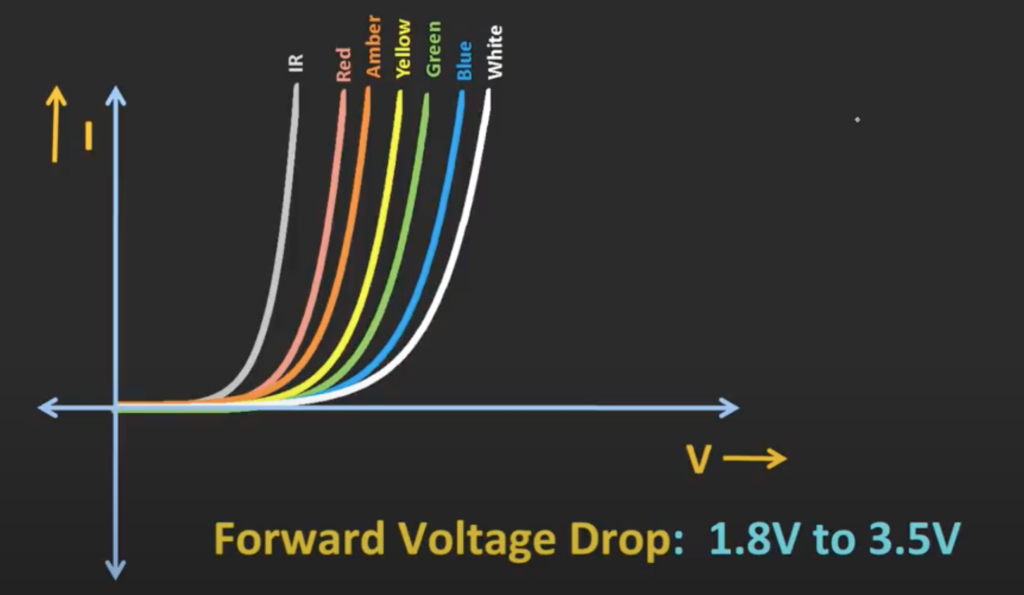
LED Circuit
When the LED is connected to the input voltage without any kind of series resistor connected to it, the current flowing through the LED will be very high and is likely to damage it. To restrict the current, the series resistor should always be connected to the LED.
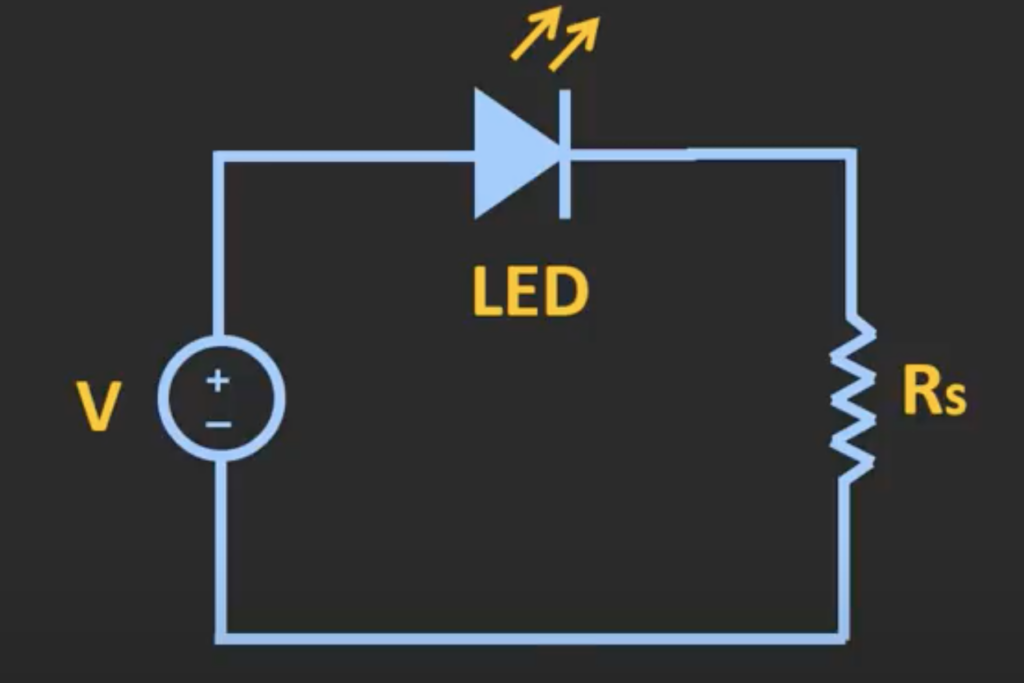
Brightness / Luminous Intensity
The Luminous Intensity specification of an LED tells you the level of light that an LED emits at a specific current. It is measured in the units of Milicandela.